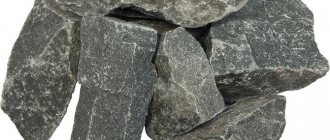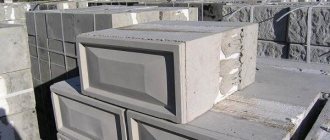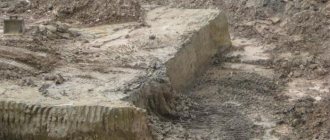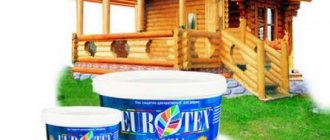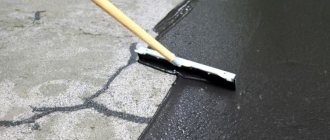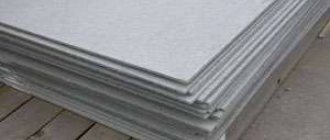The most popular and practical material, which has found its wide application in construction, repair, agriculture and everyday life, is slaked lime.
It is the main component of modern coatings, mixtures and solutions with high performance characteristics. Read more about how to properly slak and store lime, as well as for what purposes it can be used.
Fluffy lime - what is it, formula, composition
Lime, lime or fluff is a white powdery substance of inorganic nature. From the point of view of chemical classification, it is calcium hydroxide, with the formula – Ca(OH)2. In this case, such a connection is formed only after the quenching procedure. The latter is a reaction between thermally treated limestone (quicklime or calcium oxide) and water, releasing heat:
CaO + H2O = Ca(OH)2
In turn, quicklime is produced by roasting minerals containing calcium carbonate – CaCO3. This is primarily limestone, chalk or shell rock. In this case, the substance decomposes into simpler oxides of calcium and carbon:
CaCO3 = CaO + CO2
The firing procedure occurs when heated to 1000-1300 °C in special furnaces without the use of any additional chemical components. Therefore, an exclusively environmentally friendly product is formed. However, lime may contain various natural impurities - mainly clay and some minerals (magnesium, sodium and others).
In its unslaked form, lime consists of different-sized lumps of grayish color Source kakxranit.ru
Depending on how the slaking procedure was carried out, lime can be in several modifications:
- Fluffy. It is a fine powder formed after contact of lump raw materials with water. Moisture content is about 60-70%.
- Lime dough. A dough-like thick mass, the water content in which is 3-4 times higher than in fluff.
- Lime milk. The ratio of lime to water is 1:10. The composition is used for whitewashing surfaces.
- Hardened lime. It is formed during a reverse reaction when the slaked mass interacts with carbon dioxide in the air during long-term storage.
Among the main positive properties of lime as a construction component are the following:
- Affordable price. The best component of building mixtures and mortars in terms of price and quality ratio.
- Moisture-repellent nature of the surface. The lime layer does not allow moisture to pass through and is not exposed to dampness and precipitation.
- Antiseptic qualities. The surface treated with lime mortar becomes completely sterile. Even over time, the dried layer prevents the formation of mold and fungi.
Whitewashing protects walls from the formation of fungus and mold Source ytimg.com
- Resistant to direct sunlight.
- Combination with dyes.
- Versatility in use.
The negative properties of lime appear when the application technology is violated in the form of the formation of bubbles, cavities, stains, peeling and crumbling stripes on the surface or in the structure of layers. In addition, the substance itself is quite caustic. Therefore, you need to work with it in protective clothing in compliance with safety regulations.
On a note! Slaked lime differs from quicklime in 3 main external characteristics - it does not emit heat and does not lead to vaporization when wet, it looks like a white fine powder, not pieces and granules, and when water is added, it dissolves immediately, forming a coloring solution.
About the features of use and benefits of lime for the garden
The fluff helps to neutralize the acidity of the earth and enriches the substrate with useful minerals. Each pH level of the environment has its own standards, and you also need to know what kind of lime is best to apply to the soil.
How to determine high soil acidity?
The pH value of the soil must be determined before liming begins.
Neutral and alkaline soils are not treated: excess alkali in the soil will cause many crops to wither.
Acidity can be determined as follows:
- Using litmus strips. They are sold in flower and agricultural stores. A small amount of soil is applied to a piece of paper, and then the resulting color is compared on a scale.
- Using a pH meter. Few summer residents have such a device, but if it is available, they examine a handful of soil. The device shows the exact acidity value.
- Study of soil samples in special laboratories. Soil is collected from plots and sent for research; about 150 rubles are paid for each sample.
- A handful of soil is mixed with acetic acid. If there is hissing, then the soil is alkaline or neutral. There is no reaction in acidic soil.
Technical properties
According to GOST 9179-77 standards, the following conditions must be met when producing lime:
- Only carbonate rocks and some minerals in the form of additives are used as raw materials. In this case, the type and quantity of the latter are standardized by the manufacturing technology of specific types of lime.
Lime is made by burning carbonate rocks Source k-silikat.ru
See also: Catalog of companies that specialize in finishing materials and related work
- Quicklime is divided into 3 grades and should not contain additives, powder may include additives and is made in 2 grades, slaked - exists in 2 grades, both with and without additives.
- The content of magnesium oxide in the calcium modification should not exceed 5%.
- The dolomitized variety includes up to 20% MgO.
- Dolomite contains the most magnesium oxide - up to 40%.
- Hydraulic modification includes a wide variety of components - silica, clay and iron oxides.
The scope of application of fluff lime is largely determined by the following technical characteristics:
- Type of rock used as raw material and firing technology. At the same time, the color of the product characterizes the quality - the whiter it is, the higher the grade.
- Processing temperature, which determines the strength of the resulting lime. It is divided into 3 types - hard, medium and soft. The latter is most often used for construction, as it is distinguished by its minimum grain size, lowest density and faster extinguishing. If the hard one is extinguished in 10 minutes, the soft one is extinguished in just 3 minutes.
The softer the lime, the faster the slaking procedure is carried out Source volk1.ru
- Density. Depends on the process temperature. At 800 °C the product has an indicator of 1.6 g/cm³, and at 1300 °C – 2.9 g/cm³.
- Storage conditions. Considered low risk. However, the penetration of moisture into quicklime raw materials is fraught with the release of fire-hazardous heat.
- Safety. Lime does not contain harmful components. The treated surface forms pores, so that the room maintains normal air exchange with the street. At the same time, despite the anti-allergic and disinfection qualities, the material is still considered harmful upon contact with it - due to the possibility of getting burns.
Reference! Quicklime is the main component in the production of concrete, mortars, masonry components and plaster mixtures, blocks, artificial stone and other elements.
Consumption rate
Autumn fertilizers for the garden and vegetable garden, what and how.
The required volume of the product depends on the purpose of its use. If there is a deficiency of the substance, it will not give the desired effect; if the dosage is clearly exceeded, the composition will harm the crops. When using a substance to reduce soil acidity parameters, its type must be taken into account:
- for heavy substrate and clay soil, 600-900 grams of product per 1 square meter is required;
- light soils, alumina and loam need 400-500 grams of the substance
- the lightest and sandiest soil requires the addition of 300-400 grams of lime.
The drug must be administered in stages. Its use includes the following stages:
Initial deposit. To do this, it is necessary to determine the soil acidity parameters. Optimal values depend on the crops grown. So, for pears and apple trees they should be 6.5%, for strawberries - 5.2%, for blackberries, raspberries, gooseberries - no more than 5.5%. Deoxidation is combined with digging up the beds. Re-entry. This is necessary when differences appear between the levels of acidification in different zones of the garden. The procedure is carried out in doses. This is only done in specific places
Particular attention should be paid to plants that are most affected by a decrease in calcium parameters in the soil.
Compliance with the timing of the next liming of the soil is of no small importance. At high acidity parameters, this must be done every 4 years.
With frequent processing, it is worth applying the composition at intervals of 3 years.
Expert opinion
Zarechny Maxim Valerievich
Agronomist with 12 years of experience. Our best country expert.
Ask a Question
Using the substance in the fall helps destroy weeds - wheatgrass, woodlice, horsetail. These plants actively develop in acidic substrate. To clear beds of unwanted vegetation, you should use 200 grams of lime per 1 square meter.
It is also permissible to use fluff to destroy wireworms, which severely damage root crops. Female pests lay eggs in acidic soil - this environment is considered the most favorable for them.
By reducing the acidity of the soil, it is possible to gradually clear the garden of parasites. To do this, it is worth adding 500 grams of the substance per 1 square meter of area. After using the product, the soil must be thoroughly moistened and dug up. After which the beds need to be watered again. It is also useful to use additional ash, adding 1 handful of the product to each hole with vegetable crops.
Production technology
On an industrial scale, lime is made in 2 main stages:
- Extraction and preparation of carbonate-bearing rocks.
Rocks suitable for making lime are in most cases mined by open-pit mining. Quarries are often developed in an explosive way. This makes it possible to select and prepare blanks with the same properties.
On an industrial scale, raw materials for lime production are mined in open pits Source wikimapia.org
How much lime should be added to the soil on the site
Adding an article to a new collection
Lime is an important fertilizer for plants, which increases the fertility of the soil and regulates its acidity. How to properly lime the soil in the garden so as not to harm vegetable crops? Despite all its beneficial properties, lime should not be added to the soil thoughtlessly.
If the norm is exceeded, this material can have a negative effect on vegetables. The soil will become too alkaline, as a result of which the necessary micro- and macroelements (in particular calcium) will no longer be absorbed by plants
Despite all its beneficial properties, lime should not be added to the soil thoughtlessly. If the norm is exceeded, this material can have a negative effect on vegetables. The soil will become too alkaline, as a result of which essential micro- and macroelements (in particular calcium) will no longer be absorbed by plants.
One of the most common mistakes gardeners make is liming the soil and applying manure at the same time. In this case, insoluble compounds are formed that are useless to plants. As a result, vegetable crops lack the nutrients they need and therefore cannot produce a good harvest.
In some cases, liming cannot be done without, since many crops do not grow on overly acidic soil.
How to determine soil acidity?
If you do not have a special device for determining soil acidity (pH meter) or litmus paper indicators, then the lack of alkali can be determined by external signs:
- The surface of the earth was covered with a whitish-gray coating, as if wood ash had been scattered over it.
- In lowlands and holes, rusty-colored water with loose brown-yellow sediment accumulates; in addition, a rainbow film often forms on the surface of this liquid.
- Weeds with a powerful and deeply penetrating root system (in particular, horsetail, mullein and dandelion) grow too quickly in the area.
Acidic soil is loved by such plants as marsh rosemary, chokeberry, common heather, turfy and tortuous meadow grass, meadow grass, hairy grass, sedge few-flowered, thin bentgrass, clubmoss, common sorrel, sinuous pike, wild pansy, wild mustard, lupine blue, meadow cornflower, oak speedwell, knotweed, fragrant spikelet, cinquefoil, creeping buttercup, daisy, mint, sedge, pickleweed, great plantain, moss, sorrel. If they quickly fill your garden, it means there is little alkali in the soil.
Acidic soils are inhabited by plants with a powerful and long main root, which is able to penetrate deep into the soil to obtain calcium from it.
But the abundance on the site of river gravel, mountain and meadow clover, awnless brome, stinging nettle, quinoa, meadow foxtail, soapwort, meadow fescue, flat-leaved eryngium, drooping gum, meadow chin indicates that the soil has a neutral reaction. Such soil does not need to be limed.
Also, the acidity of the soil can be determined using a simple experiment: pour a few drops of table vinegar onto a handful of soil taken from the garden bed.
If bubbles and slight hissing appear, it means the soil is neutral or alkaline and there is no need to lime it. And if no reaction follows, then the soil is acidic
Features of soil liming
Doses of lime application depend on a number of conditions:
- acidity of the soil and its mechanical composition (lime is added to soil with high acidity in higher doses),
- type of lime fertilizers,
- the depth of their embedding,
- the amount of time that has passed since the last application of lime fertilizers.
The most common and effective lime fertilizer is ground limestone. Also, other substances with different percentages of lime are used on the site.
Varieties and their purpose
There are the following main types of lime and their respective applications:
- Fluff lime is widely used in construction, surface finishing, production of concrete, mixtures and solutions. Produced from raw materials containing magnesium. It is also sold in lumps and dough-like form.
- Hydraulic. Contains from 6 to 20% impurities in the form of clays. It is used primarily for the production of low-grade concrete, as well as as a basis for building elements whose operation requires high environmental humidity.
What to do if you accidentally added too much dolomite in the spring
The answer lies on the surface if you carefully read the article from the very beginning. If dolomite alkalizes the soil, then if the applied dose is too large, what do you need in the soil? That's right, quickly acidify.
Try not to uncontrollably apply any fertilizers, and dolomite is no exception.
First, if you have scattered dolomite on your lawn or other area where you can collect it, collect as much as possible. If you mixed it into the soil before realizing you added too much, don't panic. The following steps will return the pH balance to the acidic side:
Sulfur is one of the most effective treatments for alkaline soil. Soil bacteria feed on sulfur and in doing so lower the soil pH. Sulfur is sprinkled or mixed in powder form into the soil, and you can often find small bags of it at the garden center. Be sure to check the application rates in the manufacturer's instructions. These numbers depend on how much lime you accidentally added to the soil and how low you want the pH to be.
Acidic topsoil peat (red): Some gardeners do not like the recommendation to use peat that is too acidic because it is collected from ancient sediments that were once completely depleted. But it is one of the most effective organic garden acidifiers. It's expensive, but works well for both lowering pH and improving soil texture. You can buy it in large bales or bags and mix it with soil. It will not harm plants and will even improve drainage in clay soils.
Rotted manure, cow and horse, is an excellent organic matter that will add nutrients to the soil and increase acidity. It can counteract overly alkaline soil or the effects of too much dolomite added to the soil.
Instructions for extinguishing
In order to prepare a slaked lime solution, you must follow the following instructions:
- A metal container of sufficient volume is prepared.
- Pieces of quicklime raw materials are laid out at the bottom - in the quantity required for the upcoming work.
- Next, water is poured in. If you want to get fluff, for every 1 kg of raw material, take 1 liter of water; if it is a dough-like mass, the amount of water is halved.
- Water is poured in portions with periodic stirring. If you use the entire volume at once, the lumps may “drown.” On the other hand, too little water can cause the material to burn out.
- During heating, the water may begin to evaporate. To prevent this from happening, the container is covered with thick, waterproof material on top.
Important! Once completed, the solution must be left for at least 24 hours before use. If you plan to use it for masonry, then the exposure should be at least 14 days, and if for plastering - 30 days. Otherwise, the quality of the material may deteriorate due to cracking, blistering and voids.
Safety precautions when working with lime mortar
As mentioned above, when working with such material, you need to be very careful and follow the instructions of professionals. This is because the material is considered caustic. Simple rules and recommendations will help you protect yourself from possible unpleasant situations:
- when working with such white powder material, you must wear safety glasses and gloves;
- When you pour water into the powder, the quenching process begins. It is best to maintain a distance from the container in which the extinguishing process takes place. This is due to the fact that when heating the water, it is possible that the solution will splash;
- Be sure to protect your respiratory system as well. This can be done using a cotton-gauze bandage;
- If lime gets on your skin, be sure to remove it with a cotton swab moistened with sunflower oil. A compress must be applied to the area affected by the solution. Water with 5% vinegar;
- If such a solution gets into your eye, immediately rinse it with plenty of warm water. If necessary, contact a specialist.
Briefly about the main thing
Fluff is a white powder of inorganic nature. It is made by adding water to quicklime, which in turn is produced by burning carbonate rocks. The fluff consists mainly of calcium hydroxide, magnesium oxide and other minor impurities. Its main advantages are low price, water resistance, antiseptic properties, durability, and versatility.
Lime production is carried out in accordance with special requirements regarding conditions, composition of raw materials and temperature conditions. The manufacturing technology proceeds in two stages - extraction and preparation and firing. The scope of application of lime is determined by technical parameters and type modification. There are the following main varieties:
- Fluffy.
- Hydraulic.
- Komovaya.
- Sadovaya.
- Sodium.
- Chlorine.
Each of them has its own characteristics of composition, properties and scope of application. Lime slaking must be carried out strictly in accordance with special instructions.
Ratings 0
When to liming?
In the fall, fluff lime (use in the garden is described in the article) is added to the soil during digging in order to completely lim it.
Autumn digging (ploughing) of the soil is more preferable, especially when preparing early vegetables for sowing. It should begin immediately after harvesting and removing remnants of roots and tops. Fertilizers are evenly scattered on the site. The layers of soil should be turned over with a shovel so that the more dispersed top layer is at the bottom, and the structural bottom layer is on the surface. In autumn, it is not recommended to break clods and level the surface - this way the moisture in the ground is better preserved.
The main processing is carried out to a depth of 22-30 cm, for perennial vegetable crops - 35-40 cm.
Areas with a shallow arable layer require digging up the subsoil with the simultaneous application of lime and organic fertilizers:
- when digging, the fertile layer is removed, and the podzol (subsoil) is loosened to a depth of 1-2 cm;
- lime is added there (150 g/sq. m);
- the loosened layer is mixed with fertile soil;
- organic fertilizers are applied (8-10 kg/sq. m);
- the furrow is filled with the top layer of soil.
Carrying out annual loosening and fertilizing of the soil helps to increase the arable fertile layer.
Fluff lime is valued by knowledgeable owners. Application in the garden in spring is also possible. It is applied to the soil in small quantities under light digging, mainly for those crops that react especially painfully to the increased acidity of the soil: onions and garlic, lettuce, mustard, turnips, radishes, cabbage. The procedure is carried out a week before planting seedlings and sowing seeds.
In spring, it is very important to maintain soil moisture. Processing begins when the earth is still damp, but no longer sticks to the shovel, but is capable of crumbling into small lumps
Quicklime: an effective method of weed control
To prevent weeds from appearing again, you must first remove them. Not only the bed is cleaned, but also the furrows. A row of plants quickly fills the entire space. Getting rid of them is very simple; just sprinkle them with quicklime in the spring. A strong remedy will prevent the reappearance of weeds.
Quicklime is supplied as white lumps. They are obtained by burning limestone at high temperatures. If lime is exposed to moisture, it will become slaked.
It is inconvenient to use slaked lime; it contains large impurities - pebbles, unburnt limestone. They get stuck in the sprayer.
The use of the product is not always justified and is not suitable for all types of plants. Horse sorrel is afraid of quicklime, burdock is afraid of ordinary salt.
Storage
Lump lime is stored in sheds with a wooden floor raised 30 cm above the ground. Water should not come into contact with the lime, as this can cause it to heat up and cause a fire.
In lime warehouses, extinguishing fires with water is prohibited.
The maximum shelf life of ground lime in paper bags is 25 days, in sealed containers (metal drums) - unlimited.
All materials presented on the site are for reference and informational purposes only and cannot be considered direct instructions for use. Each situation is individual and requires its own calculations, after which you need to select the necessary technologies.
Don't make rash decisions. Keep in mind that what has worked for others may not work for you.
The site administration and the authors of the articles are not responsible for any losses and consequences that may arise when using the site materials.
The site may contain content prohibited for viewing by persons under 18 years of age.
Achieving any goal is daily work. If your goal is to get a good harvest, then you will need not only to invest your labor, but also to provide your garden with proper care, attention and care. Surely, the experience of many years has taught everyone that when growing anything in the garden, you cannot do without chemicals.
Most likely, everyone has heard about slaked lime in one area of conversation or another. Slaked lime (or, as it is also called, fluff) has a chemical name - calcium hydroxide. It is interesting that such lime is used in various fields: construction, water softening, leather tanning, dentistry, and the chemical industry. It has also been used in gardening.
conclusions
After the liming procedure, the yield of fruit and vegetable crops on the site increases, and the soil becomes more moisture-absorbing. In a slightly acidic or neutral environment, other important macro and microelements - potassium, nitrogen and phosphorus - are better absorbed, and soil microorganisms and insects multiply.
Did you like the article? Share with your friends:
Hello, dear readers! I am the creator of the Fertilizers.NET project. I am glad to see each of you on its pages. I hope the information from the article was useful. Always open to communication - comments, suggestions, what else you want to see on the site, and even criticism, you can write to me on VKontakte, Instagram or Facebook (round icons below). Peace and happiness to everyone!


